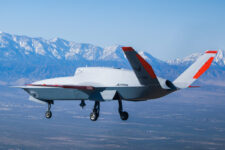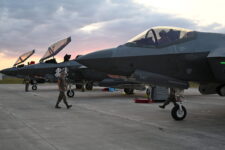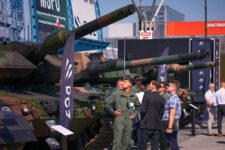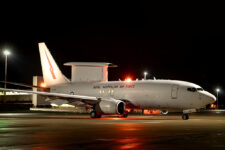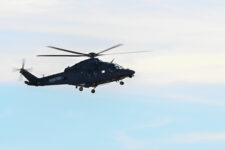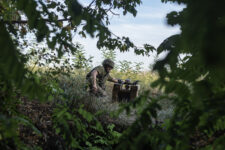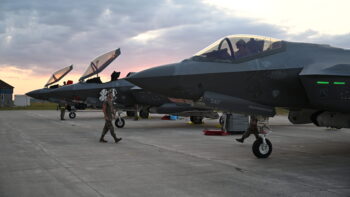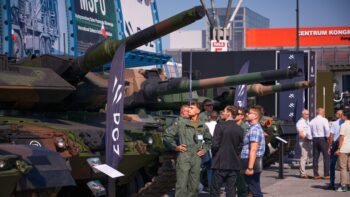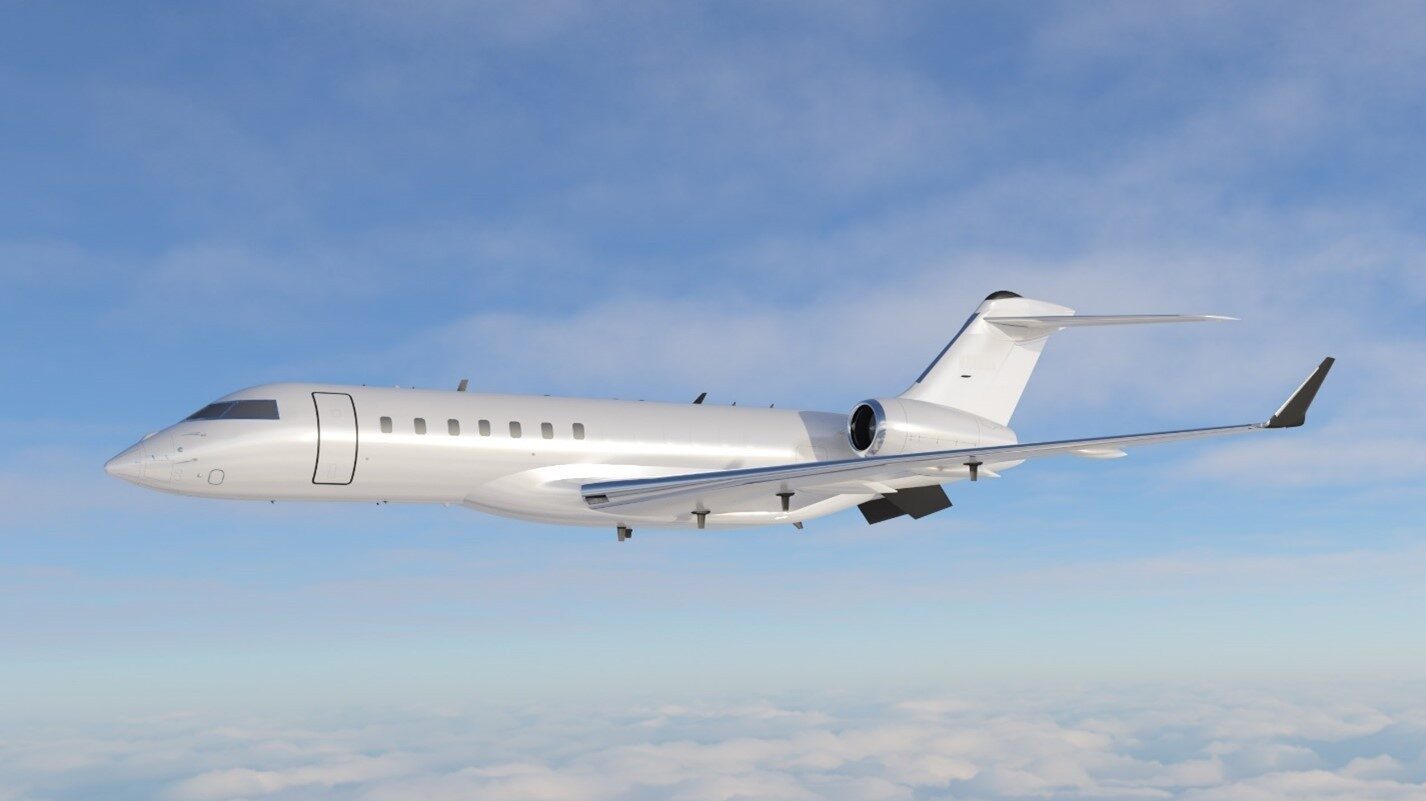
A Bombardier Global 6500 aircraft. (Bombardier via US Army)
LONDON — A key Army official is confident the service’s manned ISR HADES platform will award contracts for sensor integration before the end of the year, with the plane expected to be operational 12-18 months after.
Speaking to Breaking Defense during last week’s Farnborough Airshow, Andrew Evans, director of the Army ISR Task Force, said that the decision about which company will be putting their sensors onto the Bombardier Global 6500 airframe already selected by the service will come by “the end of the calendar year, certainly. We will look to accelerate that, and we think that partnership will be very powerful for us moving forward.”
Evans declined to say which companies or capabilities are in the running at this point, but did say the initial packages include “a Moving Target Indication capability, we’ll have high-end signal intelligence capability, and we’ll have a number of other capabilities that come with HADES as a baseline configuration.”
The Army official emphasized the benefit of adding hardpoints to the wing of the aircraft, which should allow the Army to put mission-specific capabilities onto the airplane without needing to switch out the baseline configuration — and could involve defensive capabilities. “We’re looking at that with great interest as well, right? Protecting something like this becomes very important,” he noted.
While he declined to go into specific capabilities being considered for the hardpoints, he raised the possibility of using what the Army terms “launched effects” off of hardpoints. Asked if those hardpoints could be used for a strike capability, Evans said that would be unlikely and “a little bit of a hard line for us.”
Evans also threw praise towards Bombardier, noting that the Army is on track to acquire its second Global 6500 airframe before the end of the year. The decision to go with the Global 6500 was made, Evans said, in part because the plane has room to grow in the future as the sensors for HADES evolve and grow.
“We are fully confident in where the OEM [original equipment manufacturer], in this case, Bombardier defense, is going with the jet. We’re happy about the design. We think we’ve got a good plan [going] forward there,” he said. “What I like to tell people is, the way that HADES will be configured today will likely not be the way it’s configured in five years, 10 years or 15 years.”
Manned Vs Unmanned
The fact the Army is pursuing a manned ISR platform in 2024 has raised eyebrows in some communities, especially given the emphasis the US Air Force has put in recent years on moving away from manned ISR in favor of unmanned or space-based assets.
Evans was quick to note he gets that question a lot, but deflected any thoughts that manned ISR is an antiquated concept. Space assets are very expensive, he noted, and unmanned systems have their own limits.
“If you think about an unmanned system and its value, it is communicating to something via satellite link, or maybe a direct link to a ground system. And in the world of high probability of RF [radio frequency] interference,” he said. “We’re seeing that play out in Ukraine, unmanned systems are very susceptible to that jam. So in fact, what we’re seeing happen in Europe today is oftentimes manned systems can provide support that unmanned systems cannot provide because they’re not as susceptible to the jam that’s occurring.”
“So we have to balance all of those things — endurance trade offs, payload trade offs — with link dependencies. And so we determined inside the Army that we need a mix of assets, right? We can’t be all manned. We cannot be all unmanned. We need the value and benefit of both systems,” he said.
Asked how HADES will work with other services, Evans said that the program has to be certified by the Vice Chairman of the Joint Chiefs of Staff as fitting into the Pentagon’s CJADC2 concept before it could move forward.
“I think, by and large, most folks in the DoD feel that HADES is a risk mitigator for all other investments that are being made,” he said. “So if you think about us as a service going to a to a lot of on-orbit capabilities, there still is a gap that occurs when you do that, whether it’s a technology gap — but it’s a capacity gap, and so HADES helps fill some of those gaps.”
